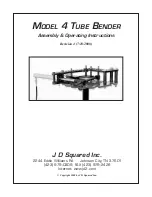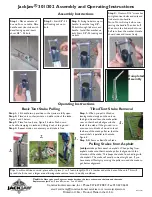
12
Helpful Hints
In just a few years, refrigerant recovery has come a long way. At first glance, it’s simply the process of
taking refrigerant out of a system and putting it into a storage tank. However, this simple process can
rapidly become difficult and time consuming if a few things are overlooked. What follows are some
notes and guidelines that we have learned over the years that can help you save time and make the
job easier.
The first thing you need to do is determine the quantity and type of refrigerant that is being used in the
system you are working on. Use a tank that is DOT approved for the high pressures that are present
with R410a. If the system is a burnout, you will need to use a special tank marked as containing burnout
and other unidentified gases and you must use extra filtration before recovery. This extra filtration is to
protect your equipment from corrosion caused by acids that may be present.
If the gas in the system is fairly clean or new, then you should use a clean, new tank. If the refrigerant
is going to be reclaimed, or you are going to put the refrigerant back into the system when you are
done servicing it, then you should use a tank with the same type of refrigerant in it. One note of caution:
If you use many different gases and you only own a single tank, you’re asking for trouble with the
Environmental Protection Agency (EPA). You should own at least one tank for every type of refrigerant
that you will service, and a spare tank for unknown gases and burned out systems.
PLAN AHEAD
Knowing the quantity of refrigerant that will be recovered is important. Not just for storage requirements,
but for the recovery process as well. For example, most systems that contain more than 5 lbs. of
refrigerant will probably have areas where liquid can become trapped.
The secret for a quick recovery is to remove all of the liquid first, then get the remaining vapor out.
Unfortunately, many systems are not “recovery friendly.” That is, the access ports are not at the lowest
point in the system. If you do regular maintenance on these machines, it would be a wise decision to
install access ports at the lowest point possible in the system. This will greatly reduce the time needed
to perform the recovery process.
If the system does not have ports at the lowest point in the system, you can use a heat gun to boil off the
trapped liquid. Look for areas that have frost or condensation forming on them. This is a good indication
that liquid is trapped there. Any trapped liquid will greatly increase the length of time needed to perform
the recovery, as can be seen in
Diagram 7
.
If you are sure there is trapped liquid in the
system, but are unable to find it, it could be
in an area that you are unable to see. If this
is the case, turn on the system compressor if
possible, and let it run for a couple of seconds.
This should move the liquid to another area in
the system and in the process it
should heat up enough to boil away.
Diagram 7
G1SINGLE OPERATION MANUAL
© 2012 APPION INC. - ALL RIGHTS RESERVED
Содержание G1 Single
Страница 2: ......






































